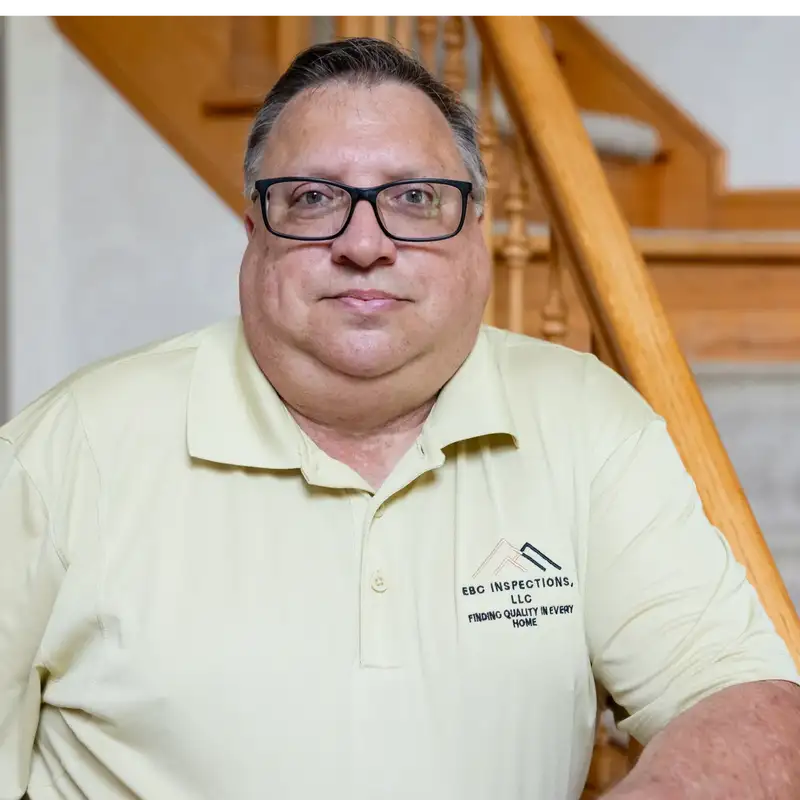Spring Maintenance – Attic Check
Spring Maintenance – Attic Check
[Intro Music]
(Host) Spring to Success! My next topic will focus on the attic. I’ll begin by describing why the attic should be inspected, then what to look for and do. Hello and welcome to EBC Home Hints, the podcast dedicated to making your home a safer place, one episode at a time. I'm your host, Paul Rochette, and today we're diving into the world of doing a visual inspection of your attic space.
(Host) Welcome to the wonderful world of the attic. A wonderful opportunity to sweat out everything you drank in the last year. Now that I have excited you, let’s begin. Attics come in many shapes and sizes. Some are tall, others barely enough room to kneel. The hole to access most attics were designed for your typical gnome with no ladder. So, if you’re a short swizzle stick and limber, bending in many directions, you too can inspect your attic. Why do you need to access the attic to inspect it? Excellent question, the attic is the only barrier between your roof and inside of the home. That is why you need to inspect it yearly. No, please do not send your ten-year-old into the attic, it can be very dangerous, unless floored and finished. Depending on your access, you need to make sure there is a safe place to walk. Not all attics have a nailed floor, some either lose boards, or nothing at all. Depending on the design of the home, the attic floor might have blown in insulation, or batting between the rafters. The attic floor is comprised of typically 2x6, up to 2x12 floor joists. The joists tie each end of the home together. Unless you have a home like an A-Frame, log cabin, where there is no attic. You can walk on these joists, but you first need to see them. Take this part seriously. If you miss a floor joist, whether your home has plaster, or drywall, you will fall through. I strongly recommend getting a piece of plywood, or wide board to walk on. Then you need to make sure not to step on any part that is not fully supported under it. (Alarm Effect) Special note: For homes with vaulted ceilings, I strongly recommend not crawling on it. I have heard they can collapse when someone is on top of them. Another thing to be aware of is the roofing nails protruding through the ceiling. I personally have experienced that joy.
(Host) What are we looking for in the attic? You’re looking first at the insulation. Whether blown in, or pink, yellow, or white fiberglass sheets, determine the depth? After taking a general measurement, look around and see if it appears to be consistent. For the southern regions, you’re looking for an R-38 insulation, or 13-14 inches deep. In the north, a
minimum of R-49, or 16-18 inches deep. If insulated correctly, it should be above the floor joists. If the material is fiberglass, do you see dark, or discolored spots? This can be an indication of damp, wet areas that may be moldy. This should be replaced. More importantly, look at the area to see if you can determine the cause. Is there a vent pipe, chimney, or other protrusion in the area? If not, you might have a shingle loose or popped up. When looking at your fiberglass insulation, on the floor, do you see a brown paper, or plastic on top? This material is called a vapor barrier and should always face the conditioned space. So, if you see the insulation paper on top, it’s installed backwards. This allows the homes conditioned space to grow bacteria within the insulation. The barrier is meant to prevent that. This needs to be corrected. If your attic has blown in insulation, the depth should be the same as fiberglass. Many times, blown in insulation settles and may need to be added to. While in the attic, look for wires dropping down into the insulation. (Alarm Effect) Carefully inspect the area. You’re looking for a potential junction box under the insulation. Does the box have a cover on it? Do you see any wires, connected with wire nuts, or tape? I discussed this in episode 5 on basement check for old knob and tube wiring. Don’t touch but call an electrician to inspect these issues and correct. Look for extension cords, used for any electrical in the attic. An extension cord is not allowed for any long-term electrical extension in the attic.
(Host) How does your attic ventilate? You may ventilate in any of the following ways. Ridge venting, look up you may see daylight. Outside you may see the shingles appear higher and small vent holes under the cap. Soffit vents are another method. You would see vented holes under the eaves. You may also have gable vents. These are on each end of the peak of the home. Vent fans, extending out of the roof can pull hot air out. What are you looking for? Is the attic hotter than 10-20 degrees above the outside temperature? If the attic feels stuffy and closed off, you may notice blackening on the underside of the roofs sheathing. This can be a mold caused by damp and moist air trapped in the attic. Is your insulation becoming a darker color as well? If you have eave vents in the soffits, does your insulation go all the way to the edge of the attic? The eaves reside outside the envelope of the home and can allow an inflow of air, when not covering the openings in the attic. When you see, smell and feel any of these concerns, contact a roofing specialist. They can inspect and provide better ventilation ideas and suggest how to resolve these issues.
(Host) Finally, look at all the visible wooden structures in the attic. You’re looking for separation of wood framing, split wood, unsupported structural members and cuts into the structure to be able to run wiring and conduits. Some holes are allowed in structural framing if in the correct location and follow proper procedures. This is too much to cover in a podcast. So, look for glaring holes, or chunks of wood removed from supports. If any structural issues are found, it’s best to have a specialist look. Normally, they would not
charge you if providing a quote to repair. As a note, on things of this scale, get at least three experts to give you thoughts. I cannot cover everything about the attic in a ten-minute podcast. If anyone would like more details, please let me know. I hope this helps people understand the importance of inspecting your property.
[Closing Music]
1. (Encourage Listeners)
Host: "Thank you for tuning into EBC Home Hints! If you found today's episode helpful, please like and subscribe. If you want to stay updated with more tips and insights, I encourage you to visit our website at EBCInspections.com. Don't forget to follow us on social media like Apple Podcast, Spotify, Overcast, Pocket Casts, YouTube, Castro, Goodpods, Castbox, podcast addict, Facebook, Instagram, Player FM and Amazon Music for the latest updates, resources, and community discussions. Join me online and be part of our growing community dedicated to informed and empowered homeownership!"

